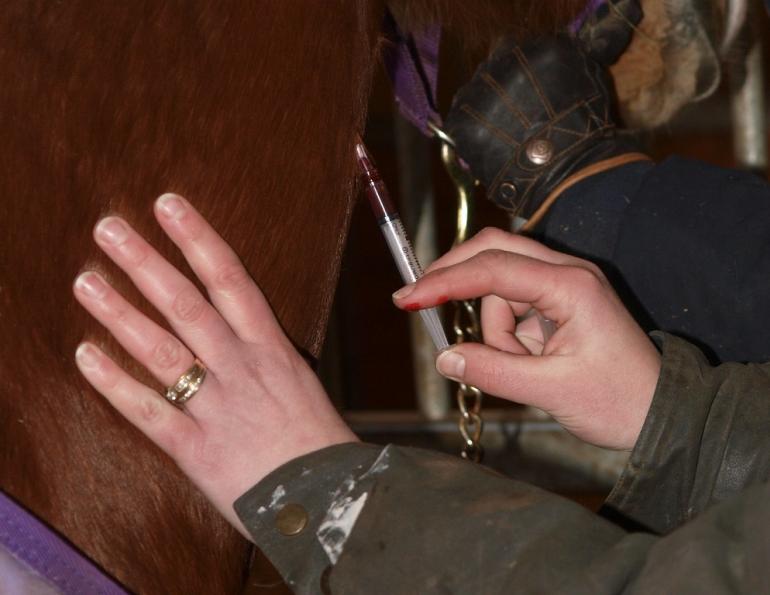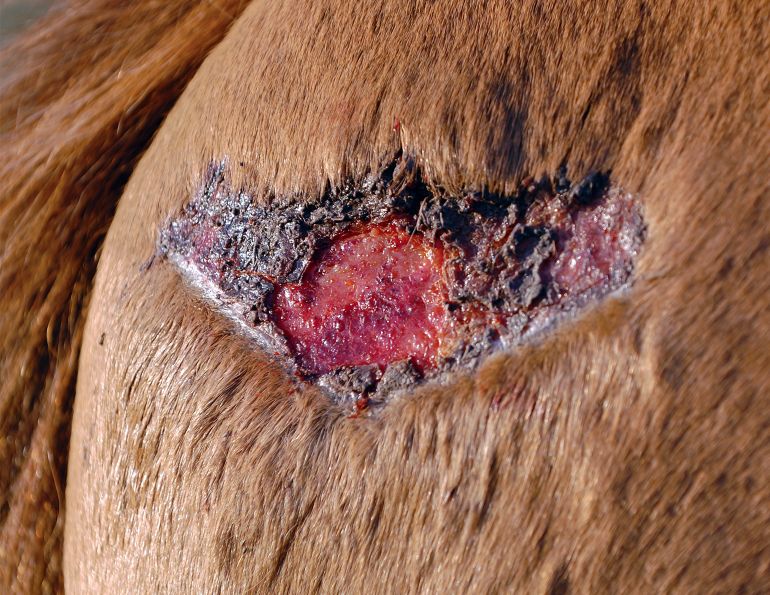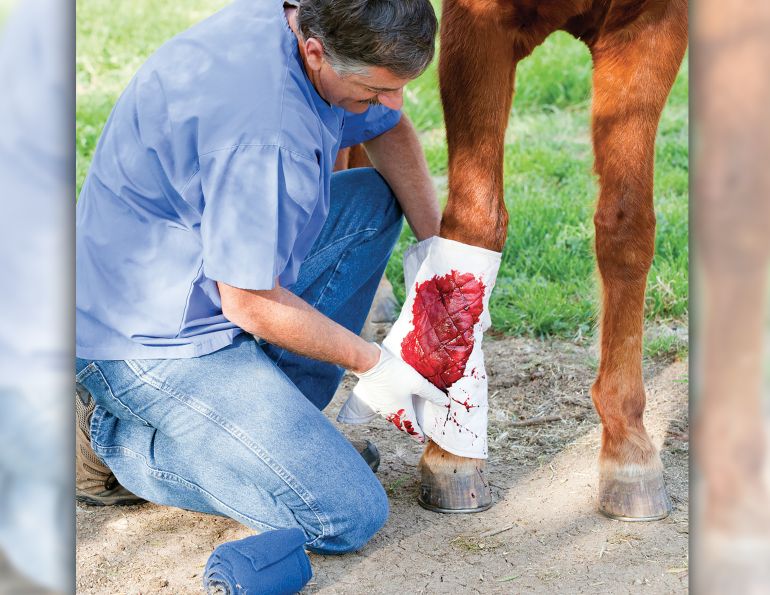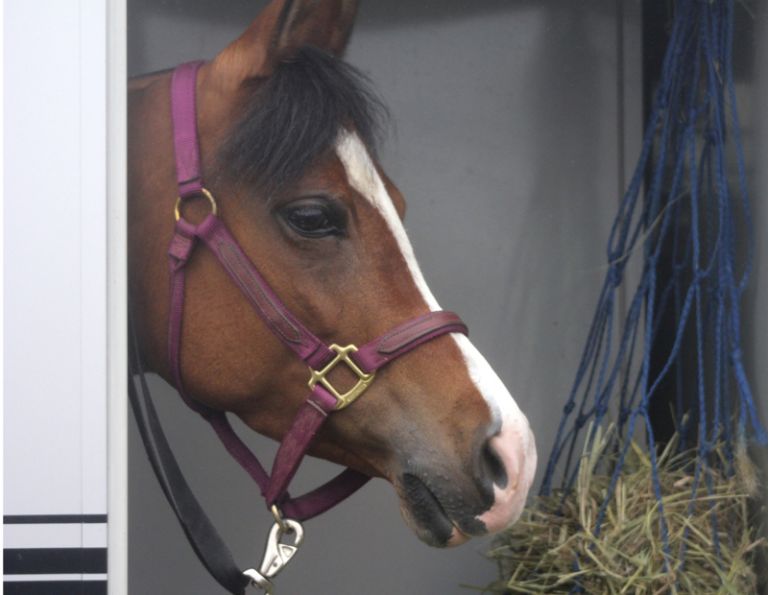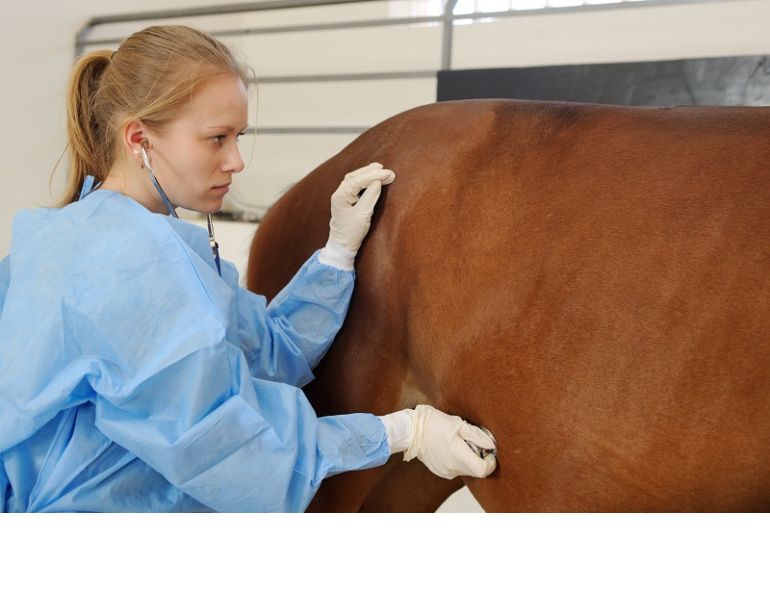By Melanie Huggett
If your vet told you it was necessary for you to give your horse an injection, would you know how?
Most horse owners will need to give their horse medication via a needle sooner or later, so learning how to properly and safely administer a basic injection is a good investment in your horse’s health care.
There are three types of injections used with horses:
- Intramuscular (IM) injections are given into a large muscle mass, and are the most common type of injection used.
- Subcutaneous injections are given underneath the skin.
- Intravenous injections are given into a vein, and it is not recommended that horse owners give this type of injection unless they have had adequate equine medical training.
This article will cover how to give IM and subcutaneous injections.
Safety First
Safety of the horse and handler should always be the number one priority when giving an injection.
Before giving any injection, it is important to consult your veterinarian and make sure you are using the right type of medication, in the correct dosage, via the proper route (IM or subcutaneous). Make sure your vet has given you any extra information or precautions associated with the particular type of drug or injection you are giving. Improper injections, such as giving a horse the wrong type of medication, in the wrong dosage, or at the wrong location, can lead to infections of the injection site, life-threatening drug reactions, or simply an ineffective treatment.
Drugs should always be stored and handled as recommended to avoid problems. Make a note of the expiration date on the bottle of medication before administration. If you are unsure at any point, contact your veterinarian.
Horse Handling
Always have a handler available to hold the horse, rather than tying the horse. If a tied horse reacts to the needle or spooks, he may pull back and panic or kick out. A handler greatly increases the safety of the person giving an injection by allowing more control over the position of the horse. The handler should stand on the same side of the horse as the person giving the injection so that both are kept safe should the horse act up. Some horses are considered “needle shy” and one should always take extra precautions with these horses. A humane twitch may be needed to relax the horse.
Injection Sites
There are four main injection sites used in horses:
Neck: The base of a horse’s neck is the most common injection site as it is easily accessed and gives the injection administrator a safe place to stand. To locate the appropriate spot on the neck, first find the line of the shoulder blade at the base of the neck. Place the heel of your hand against this line, fingers pointed toward the poll, so your hand sits in the middle of the neck. The area covered by your palm is the injection site. It’s important to locate this area correctly, as giving the injection too far towards the poll, up towards the crest, towards the underside of the neck, or too close to the shoulder risks the chance of hitting bone and blood vessels.
Buttocks: The buttocks just below the point of the pelvis contains a large muscle mass which is suitable for injections. It is the preferred injection site for foals and drugs which may cause pain or swelling at the injection site. However, injection administrators will be within kicking range of the horse, even if standing to the side. To locate the correct injection site at the buttocks, first locate the point of the buttocks. Approximately one inch below this is the large muscle mass.
Chest: The pectoral muscles in the chest are another possible injection site. These muscles can become sore easily so should only be used if the horse is sore in other injection sites. The injection administrator is also in a precarious position as they must lean over, putting them within range of bites and strikes with the front feet. The correct injection site is the bunchy muscles between the tops of the forelegs.
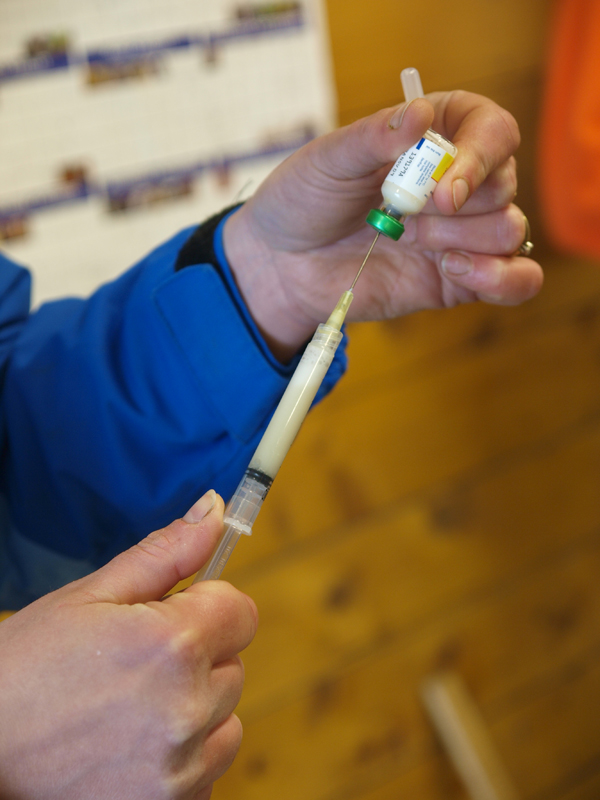
Always use a new, sterile syringes and needles, and consult with your veterinarian about the type of medication, correct dosage, the route (IM or subcutaneous), and drug reactions, before giving any drug to your horse. Photo: Pam MacKenzie Photography
Croup: The gluteal muscles at the top of the rump may also be used as an injection site. This site allows the injection administrator to stand in a relatively safe position, but the site has poor drainage in the case of an abscess. To locate the correct injection site at the top of the rump, draw a line from the point of the hip to the top of the tail, and another line from the top of the croup and the point of the buttocks. The intersection of the lines is the injection site.
Preparing the Syringe
Before giving the injection, you must prepare the drug in a syringe. Always use a new, sterile needle and syringe for each injection to reduce the risk of infection. Open individual packages just before use. Never use the same needle or syringe on different horses, as diseases are easily transferred between horses this way. To draw the medication into the syringe, first shake the drug vial well if required, then tighten the needle on the end of the syringe, and pull back on the syringe. Insert the needle into the vial, and push down on the syringe to push air into the vial. Pull the syringe plunger back until the correct amount of medication is in the syringe. Turn the vial over and remove the needle from the vial.
Never mix multiple drugs in the same syringe. Doing so could cause one or both of the drugs to become inactive or less effective. It is better and safer to give each drug in a separate, sterile syringe in a different injection site (for example, one on each side of the neck).
Noticeable dirt should be brushed from the injection site; however, using a sterile needle and syringe is more important in preventing infections than thoroughly cleaning the injection site.
Giving an IM Injection
- Make sure the horse is calm and the needle and syringe are prepared before attempting an injection. Then proceed with the following steps:
- Remove the needle from the syringe.
- Next to the injection site, pinch the skin or tap in a rhythmic motion with the side of your hand.
- Insert the needle as you pinch the skin or at the same time as a tap of your hand. The needle should be inserted quickly to reduce pain, into the muscle all the way to the hub, and should be perpendicular to the body.
- Attach the syringe to the needle.
- Always aspirate or pull back slightly on the syringe plunger to ensure you are not in a blood vessel. If any blood collects in the syringe when you aspirate, remove the needle and place it in a different location. Always retest for blood in the new location.
- Slowly insert the medication by pushing on the syringe plunger.
Giving a Subcutaneous Injection
A subcutaneous injection is similar to an IM injection, except the drug is given underneath the skin.
- Lift the skin on the injection site.
- Insert the needle parallel to the horse’s body, so it lies between the skin and the muscle.
- Pull back slightly on the syringe plunger to ensure the needle is not in a blood vessel.
- Slowly administer the medication by pushing on the plunger. A small lump may form underneath the skin where the drug was inserted.
Regardless of which method of injection you give, always safely dispose of all used syringes and needles in a medical waste container, and make sure to watch the horse for 30 minutes after giving the injection to ensure that there are no adverse reactions to the medication. Signs of allergic reaction include swelling around the injection site, hives, increased respiratory rate, depression, or agitation.
With files from extension.org and www.aces.edu.
Main Photo: Pam MacKenzie Photography - Intravenous injections are given into a vein and it is not recommended that you give this type of injection unless you are trained and qualified to do so.
This article originally appeared in the March/April 2009 issue of Canadian Horse Journal.



